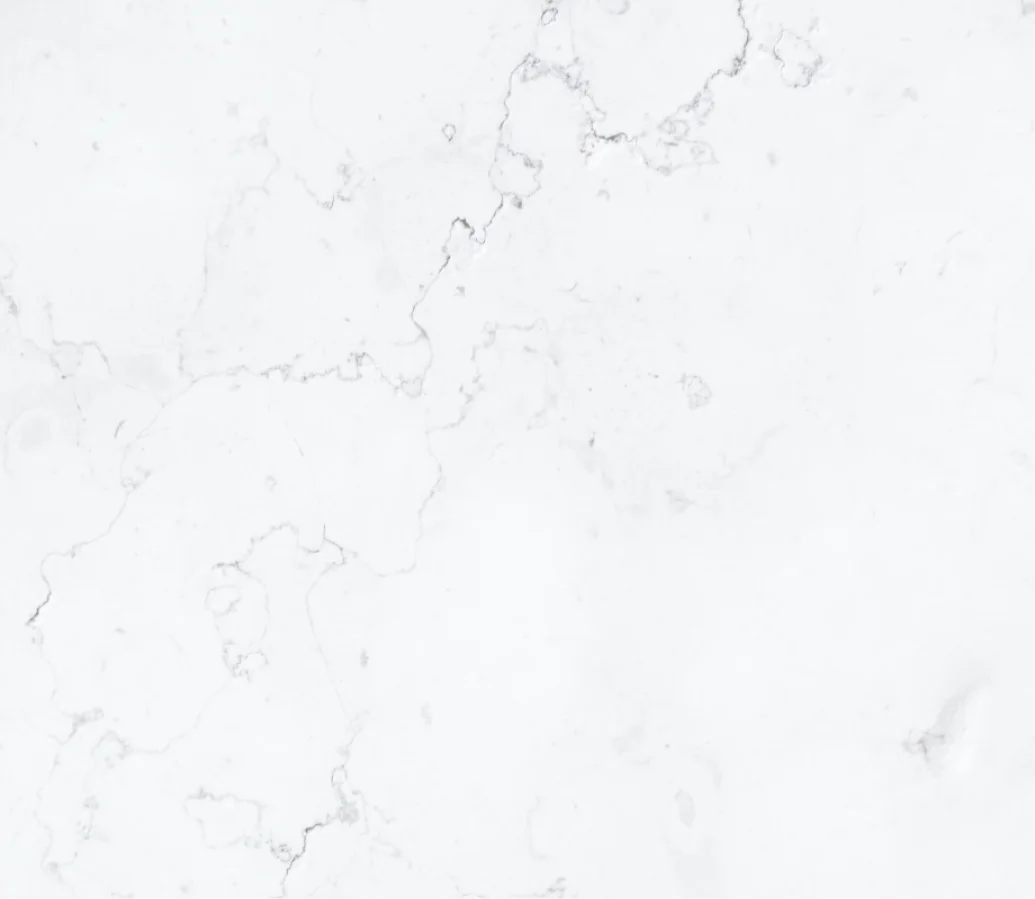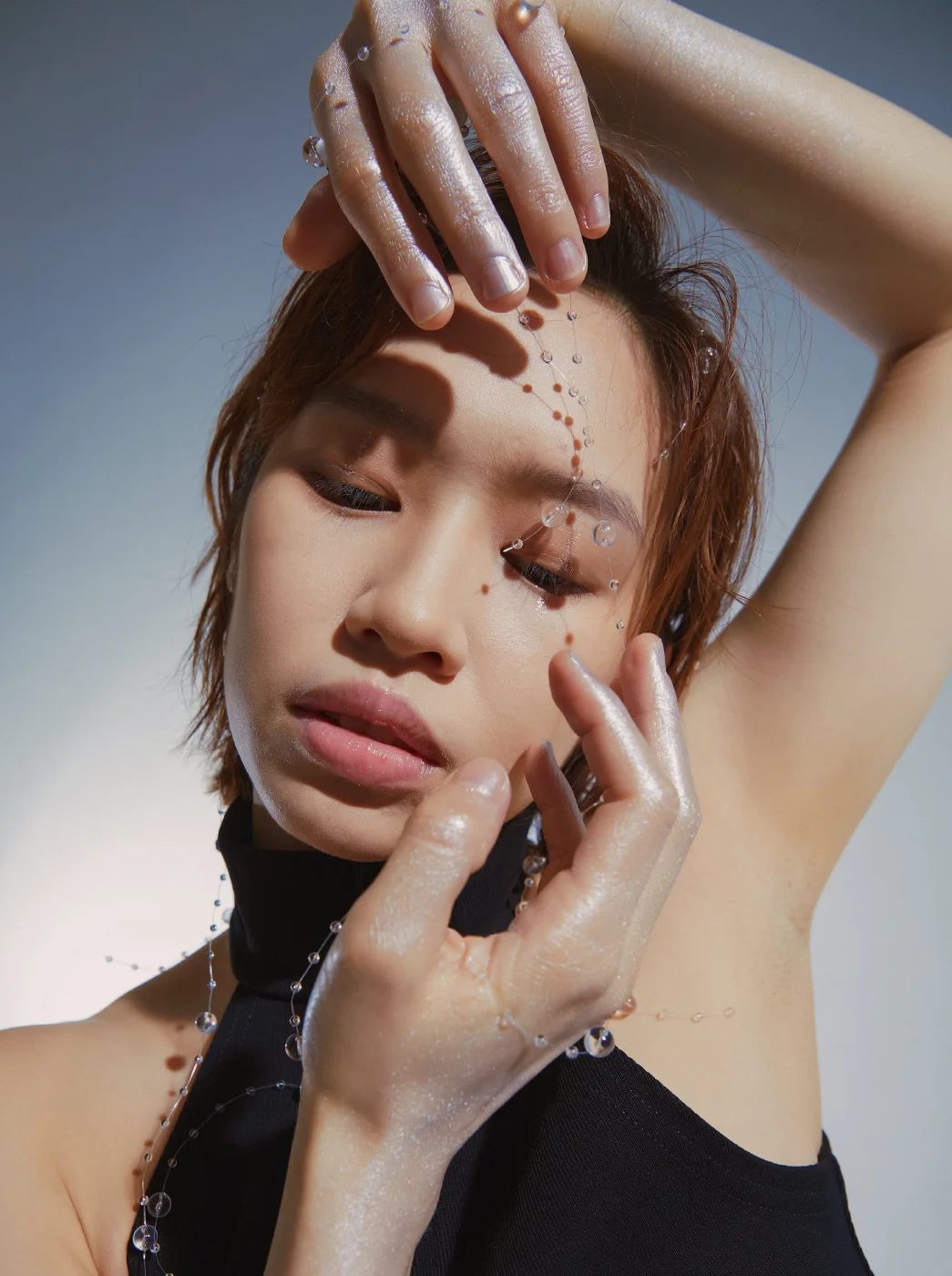- Home
- Treatments
- Dermal Fillers
London’s Premier Destination for Dermal and Lip Filler Treatments: Expertise in Tear Trough, Chin, Jawline, Cheek, and Beyond
Defining Beauty with Dermal & Lip Filler Treatments in London
The world of aesthetic medicine has exploded over the past few years with more people than ever discovering and enjoying the benefits of treatment. Dermal and lip filler treatments in London are at the forefront of this revolution. Not just a fleeting trend, fillers have become a tried and trusted method for thousands who wish to refresh, enhance, or simply maintain their youthful appearance.
Why has the popularity of dermal fillers risen so fast in London? When we talk about volume, particularly in the face, it’s not just about fullness. It’s about restoring the balance, symmetry, and harmony that often fades as we age or due to environmental factors. Treating with fillers is also significantly about creating lift in the lower face to work against the downward pull of everything.
Most people are now seeking ways to look rejuvenated without undergoing invasive surgery or looking like they have undergone surgery. Dermal filler treatments, thanks to their non-surgical nature and quick procedure time, are a leading choice. Whether it’s plumping thinning lips, enhancing shallow contours, softening facial creases and wrinkles, or creating lift dermal fillers are your gold standard choice.
Our clinic London Professional Aesthetics, is a leading London clinic providing transformative filler injections. The experience at our clinic is more than just a treatment. We take enormous pride in ensuring that from the initial consultation to the aftercare, our patients receive expert advice, matched with top-tier service. And for those who are more inclined towards enhancing their pout, our lip filler solutions are designed to offer natural yet noticeable results.




You might wonder about what fillers are made of. Hyaluronic acid, a naturally occurring substance in our skin, is a popular choice for many filler treatments. Its exceptional capacity to retain moisture makes it a favourite for restoring lost volume, especially in areas like the lips. It is also an extremely safe product and has been used in aesthetics for many years now and has an incredible safety profile as compared to permanent fillers.
In the vast spectrum of aesthetic treatments, the term dermal filler encapsulates a range of products and procedures. The right one for you will depend on your unique facial structure, desires, and expert advice from our skilled team, who carry the experience and knowledge that you need to make good decisions about your cosmetic treatments.
So, who is the ideal candidate for fillers? Anyone (man or woman) seeking to enhance their natural features, or just add a touch of volume to their lips or face, or create lift to counteract the natural sag that starts to occur with age. But remember, like any injectable treatment, the key to optimal results lies in choosing the right clinic, the right practitioner and the right filler used.
Our skin clinic not only boasts state-of-the-art technology and products including Kysense and Juvederm but also a team that deeply understands the intricacies of the human face. This blend of technical know-how with an artistic touch ensures results that are not just beautiful but also natural-looking.
Fillers are more than just an aesthetic treatment. Done well, fillers can help to emphasise your strengths and take focus away from areas you don’t like, helping you to feel confident and self-assured.
Understanding the dermal filler process
Every individual’s facial anatomy is unique. Every treatment starts with a consultation. The purpose of this is to ensure that you are medically suitable for treatment. But it goes much further than this, as you are buying a service not simply a product. Our focus is on understanding your unique needs and aspirations. With your input, we map out the areas that require attention and ensure that you’re well-informed about the relevant procedure, potential side effects and expected results.
With dermal filler injections, we always ensure your skin is scrupulously clean. You will then have numbing cream applied to the area to be treated. This helps to keep you super comfortable throughout the process. During the treatment, you will be aware of what is happening. Filler differs from Botox treatments in that results are visible immediately following treatment. However, we always advise that your results will continue to improve over the weeks that follow. This is down to the fact that it takes time for the filler to integrate with your body tissue and to create the lift that comes a little later, improving sag and dark shadows.
With regards to side effects, we always advise to factor in some temporary swelling or a bruise. Whilst this doesn’t happen at every treatment, it is a normal side effect and can happen and it’s always less stressful if you plan for these minor unwanted effects that can occur as a side effect when we use dermal fillers.
Most high fillers contain hyaluronic acid these days and last somewhere around 12 months. This allows us the option of ‘layering’ an approach whereby we can retreat before the product has completely worn away, so at each treatment filler is injected -we are building on a foundation we have created. This means that you can continue to make small subtle improvements without anyone suspecting that you have had treatment.
Chin Filler in London: Sculpting the Perfect Profile
In the modern era of aesthetic medicine, the chin has emerged as a focal point for many individuals seeking facial harmony and balance. At the heart of this trend lies chin filler, an innovative treatment offering promising results without the invasiveness of surgery. London has seen a surge in individuals exploring this enhancement.
So, why the emphasis on the chin? The answer lies in its ability to significantly influence facial proportions. A well-defined chin complements the jawline, accentuates the neck, and brings overall balance to one’s profile. However, not everyone is blessed with the ‘perfect’ chin. And that’s where London Professional Aesthetics come in.
From the moment you step into our skin clinic for a consultation, you’ll benefit from the experience and artistry of our nurses. Our team’s accumulative experience and expertise will guide you through every aspect of the chin filler process. Our job is to guide you to treatments that will make you feel good about yourself and to help you choose treatments that will bring out the best in your overall features.
The areas of focus aren’t limited to just enhancing the chin’s projection. This is simply a highlight of one of the current trends within aesthetics. Aside from that dermal filler can be used in many different areas of the face and should always be administered to improve the face as a whole not just targeting one area in isolation.
During your consultation, our specialists will discuss the optimal volume and placement of the filler, ensuring that the end results align with your desires. This experience isn’t about simply injecting a filler; it’s about understanding the ratios of the face, the interactions between facial muscles and skin and your goals for treatment.
At London Professional Aesthetics, it’s not only the dermal filler procedure that sets us apart. It’s a holistic experience. We understand the concerns, aspirations, and questions people might have about undergoing such procedures. Therefore, our approach is tailored, providing each patient with ample time to discuss, understand, and decide. It is so important for us to guide you through the entire process in the most stress-free way possible.
The trend toward non-surgical treatments like chin filler underlines a broader shift in how people perceive aesthetic treatment options. It’s no longer about drastic changes or chasing lines and wrinkles but subtle enhancements that exaggerate your natural looks.
Under Eye Filler: Rejuvenate Your Appearance
There’s a common saying that the eyes are the windows to the soul. However, with time, the areas surrounding our eyes often reveal more than we’d like – sleepless nights, relentless stress, and the inevitable march of time can take their toll. The tear trough as it’s known, is an interesting area. For some, they will always have noticed a groove or darkness here ever since childhood. In other words, tear trough grooves can be ageing related but they can also be a normal part of some people’s anatomy. For those who suffer from tear troughs regardless of the cause, no amount of eye cream or early nights will help. That’s where the transformative potential of under-eye filler comes into play.
In our esteemed skin clinic, nestled in the heart of London, we’ve witnessed countless individuals who want to address the tired, hollow look that creates a tired, drained expression. The under-eye region, often referred to as the tear trough, is delicate. The skin here is thin, making it susceptible to volume loss, dark circles, and fine wrinkles. Why does this area attract so much attention? The eyes are central to facial communication. They’re the first areas people look at, making them critical for our overall appearance. There’s nothing more annoying than having comments made on how tired you look when you are not tired at all!
Our treatment is rooted in science and artistry. The type of dermal filler we employ is based on hyaluronic acid, a naturally occurring substance in the body, found in filler injections. This ingredient contains hydrating properties and can restore volume. However, the true magic unfolds with the skilled hands of our practitioners. Their accumulated experience ensures that filler integrates seamlessly, providing lift and light reflection without making the area appear overfilled.
Every individual’s facial anatomy is unique. So, during your consultation, our focus is on understanding your unique needs and aspirations. We map out the areas that require attention and ensure that you’re well-informed about the procedure, potential side effects like slight swelling, and expected results.
Another option for treating the tear trough area is surgery. Surgery can be used both in the upper and lower lid rejuvenation. Whether you would benefit more from surgery or dermal filler would be fully discussed in your treatment planning. Tear trough filler (unlike the surgical option) is swift, results are immediately visible, and there’s virtually no downtime.
Whether it’s about erasing fatigue, softening fine lines, or simply enhancing the appearance of the under-eye region, our clinic is equipped with both the knowledge and passion to help you make the best decisions about your face.
Jawline Filler: Sculpting Precision for an Improved Profile
In the world of aesthetic enhancements, the demand for jawline filler treatments has surged, allowing individuals to redefine their profiles and embrace their ideal contours. Again this treatment trend has emerged simply from a place of having it as an option to make a subtle but noticeable enhanacment.
This treatment is popular for men aspiring to that more chiselled contour to women looking to achieve that real-life Instagram ‘snatched’ look. For some, it may be a treatment that we suggest to help reduce sag by creating lift and pull in different planes.
Understanding the facial area and its underlying structures is crucial. The jawline is a complex structure of bone and muscle, and its enhancement requires a profound understanding of facial proportions and balance. Our team, backed by years of experience, employs this knowledge to strategically place filler injections. These injections, filled with hyaluronic acid, mould and contour the jaw, bringing about a transformation that’s both subtle and stunning.
The journey towards a redefined jawline begins with an in-depth consultation. Here, we evaluate your facial structure, discuss your aesthetic goals, and provide insights into the procedure. This dialogue ensures that every treatment is tailored to the individual, meeting their desires while ensuring natural, harmonious results and providing emotional reassurance every step of the way.
As with everything we do, there’s beauty in balance. By augmenting the jaw, other facial areas like the chin and neck often appear more harmonised. The effects can be so transformative that they alter how light plays on the face, emphasising certain features like the cheekbones while subtly drawing attention away from others. This is the artistry of well-placed dermal filler.
As with all aesthetic treatments, jawline filler isn’t exclusive to any gender. Men and women alike seek these treatments, each with their specific goals and desired outcomes. For some, it’s about a chiselled, athletic appearance, while for others, it’s about softening angles and achieving a refined silhouette. For our practitioners, understanding the difference between increased masculinity or femininity in the treatments we deliver means that we can serve everyone with the same incredible results.
LPA Skin Clinic prides itself on its ability to stay at the forefront of these treatments, adopting the latest techniques and ensuring safety at every step. By choosing us for your jawline filler treatment, you’re not only opting for a physical transformation but an experience rooted in trust, excellence, and artistry.
Cheek Filler: Radiant Volume for a Luminous Look
Elevate and enhance, are two core principles when it comes to the delicate art of cheek filler treatments. In the aesthetic realm, the cheeks are emblematic of youth and vitality. Cheek filler or mid-face lift is the cornerstone of filler treatments. For many people, they will notice deep lines and volume loss lower in the face, However the root of this problem originates in the mid-face where we start to lose volume in the early stages of ageing, creating sag and droop in the lower part of the face.
Cheek filler is also an option to create natural contouring with no need for makeup. In fact, most people beyond their mid-twenties would benefit from a cheek enhancement treatment.
Stepping into our renowned skin clinic, clients are met with a reassuring ambience of expertise and warmth. Each person we see has a unique story and unique goals. For some, they may be very clued up on how to achieve the results they are after, whilst others may need more guidance and input.
During the initial consultation, our team dedicates time to understanding your aspirations. We examine the areas of concern, the natural curve of your cheeks, and the play of shadows and highlights on your face. This assessment isn’t just skin-deep; it dives into the undercurrents of ageing, lifestyle, and facial expressions.
As time passes, the face naturally loses some of its youthful volume, especially in the cheeks. This can lead to a flattened appearance, making one look tired or aged beyond their years. Cheek filler treatments leverage hyaluronic acid, a substance naturally found in the skin, to replenish this lost volume. When expertly administered, fillers can recreate the soft, rounded contours of youth, or sculpt higher, more defined cheekbones depending on your aesthetic goals.
The transformative power of cheek fillers doesn’t just stop at volume restoration. By elevating the malar region, has a cascading effect, subtly lifting adjacent areas such as the nasolabial lines and even the jawline. It’s a great way to mimic how your face used to look and therefore keeps you looking like you.
Having an experienced practitioner is paramount. With every injection, they’re not just adding volume; they’re thinking about the impact on the rest of the face and the interaction of muscles and skin. This is not a one-size-fits-all treatment, every individual contour matters.
Book Your Free Video Consultation with LPA's Clinical Director Elizabeth Rimmer
Nasolabial Fold Filler: Smoothing the Lines of Expression
The nasolabials, commonly referred to as ‘smile lines’ or ‘laugh lines’, are the two skin folds that run from each side of the nose to the corners of the mouth. While they are a natural part of our facial anatomy, deepening nasolabial folds can be a telltale sign of ageing, often giving the face a more tired or saggy appearance. This is where nasolabial fold filler treatments come into play, offering a rejuvenated and fresher look.
Upon entering our esteemed skin clinic, patients often express their desire to restore a youthful freshness to their appearance without altering their unique facial character or making them look 10 years younger, for most, it is about ageing well rather than not ageing at all. This is a sentiment we wholeheartedly respect and incorporate into our treatments.
The initial consultation is crucial. It’s not simply a tick-box exercise, it’s a collaborative space where we discuss you in general before we get down to the depth of the folds, your skin’s health, and the volume loss contributing to their prominence. By understanding you and the specific areas of concern, and the natural dynamics of your facial expressions, we’re able to tailor a treatment that respects your individuality while delivering impactful results.
Nasolabial fold filler treatments primarily use hyaluronic acid, a naturally occurring substance in the skin, to provide immediate volume and support to the targeted area. The result? A softening of the folds, a lifting effect, and a more youthful transition between the cheeks and mouth.
What sets our treatment approach apart is our dedication to natural outcomes. We avoid the overfilled or “done” appearance, which can detract from one’s natural beauty. Instead, we aim for subtlety—a refined enhancement that leaves people guessing whether it’s a result of a good night’s sleep, a holiday, or just a happier phase of life. Whether or not you choose to share your secret is entirely up to you.
Our clinic is committed to ensuring each filler treatment is administered safely, and with integrity and that your results capture the authentic version of you.
Temple Filler: Restoring Harmony to Your Facial Profile
The temples, though not immediately apparent, play a subtle yet critical role in the overall harmony and balance of the face. With age, many people experience a hollowing in the upper area at the sides of the head, leading to an imbalanced appearance that emphasizes other signs of ageing. Temporal filler treatments are the unsung heroes in the world of aesthetic medicine, addressing this often-overlooked area. This can be an area that you may not be aware of as a treatment option, or you may not conceptualise the benefits that treating this area can bring.
Our commitment at LPA is to ensure that every facet of your facial structure is addressed holistically. It is our job to give you all the information and advice you need to plan your treatments over the years. In our experience, when the temples begin to lose volume, they can cast shadows and make the face appear narrower or aged. If we see this is happening in you, we will let you know and we will provide you with all the information you need to decide whether you would like to pursue the effects that we can achieve.
We use only the best in hyaluronic acid fillers, (Kysense and Juvederm). We delicately introduce the right volume back to the temples. This procedure does wonders in subtly lifting the brow, opening up the eyes, and giving an overall rejuvenated look to the face. Furthermore, with the precision and experience of our experts, we ensure that the result is seamless, integrating naturally with the surrounding areas.
While temple fillers are a lesser-known treatment, our clients often express their amazement at the difference it makes.
As experts we make sure that you are aware of all of the options you have when it comes to ensuring each client has a comprehensive consultation, we’re able to advise on treatments like temple fillers that many people might not initially consider but can make a world of difference.
Dermal Filler Treatment: Crafting A Refined, Revitalized You
The science and artistry behind dermal filler treatment have witnessed phenomenal advancements over the years. This is more than just a procedure; it’s an intricate craft that weaves together deep knowledge of anatomy with the finesse of aesthetic sensibilities. Over the years our understanding of the way our face ages and the physiological processes taking place under the skin also guide the success of our treatments.
At our esteemed skin clinic, every dermal filler treatment is personalised to resonate with an individual’s unique features and aspirations. Your face tells a story, and we believe in enhancing its narrative, not altering it. Whether you are starting to look tired, grumpy, or unapproachable – when those traits are not the ‘real you’ it can be very frustrating.
During the initial consultation, our specialists immerse themselves in understanding your aesthetic goals. Your facial areas are mapped, and an informed strategy is devised to bring out the best in you. Every line, contour, and curve is considered in this collaborative journey towards rejuvenation.
Experience has taught us that while many people focus on more prominent facial regions like the lips or cheeks, it’s often the subtler enhancements that bring about the most transformative results. Whether it’s adding a touch of volume to soften the nasolabial folds, or subtly elevating the brow to give the eyes a more youthful, alert look – the devil is in the details.
Wrinkles, while a testament to the rich tapestry of your life, needn’t define your appearance if you don’t want them to. Our tailored dermal filler treatments can soften these, and the skin’s suppleness is restored. Using only the highest-grade hyaluronic acid fillers, we ensure natural, long-lasting results harmonising with your overall facial structure.
It’s not just about the procedure but the entire journey. From the initial consultation to post-treatment care, our team is with you every step of the way. It’s this commitment to the experience that sets us apart, ensuring each patient feels valued, heard, and ecstatic with their results.
Dermal and Lip Filler Treatments: Dual Enhancements for a Harmonious Appearance
Dermal and lip filler treatments are phrases that can sometimes be used incorrectly. Lip filler treatments ARE dermal filler treatments, but it doesn’t necessarily work the other way around as dermal fillers can be used to treat many areas not just the lips.
The lips are often the focal point of the face. When speaking to each other, our eyes usually dart between the lips and eyes, making them a vital aspect of one’s overall appearance. Whether you seek to add a hint of volume, correct asymmetry, or simply desire that soft, pillowy look, our lip filler offerings are tailored to your unique needs. Each injection is made with precision, ensuring the outcome is balanced and natural-looking. LPA offers the best lip fillers in town.
Beyond the lips, the face hosts several areas that, over time, may lose their firmness or fullness. This is where our dermal filler treatments come into play. They address common concerns like wrinkles, sunken cheeks, marionette lines or a less defined jawline, ensuring every facial feature complements the other.
Cost of Dermal Filler
If you are considering hyaluronic acid dermal filler treatments in London, it’s important to understand the cost. When you come for your consultation, we will always address costs as we know that this is an important factor to cover. We also understand that when you book a dermal filler consultation, you may have no idea what you need, or it may be that what you thought you needed is not right. Our role is to not only listen but really hear you, to assess your face as you are speaking and at rest and finally to offer you our very best advice. The cost will depend on the type of filler used and the amount of dermal filler.
Dermal filler treatment at LPA starts at £400 for 1ml lasting around 12- 18 months (Tear Trough filler however is £350 for 1ml). In most cases, you will benefit from more than 1ml. You will find that the price/ml decreases as you go up. This is a very ‘normal’ pricing strategy.
Here at London Professional Aesthetics, we also offer several packages which incorporate dermal filler treatments. We put these together as the most popular types of combinations that people opt for to help with cost and get the best possible results. It is also worth noting that we have finance options and also offer a monthly membership scheme for our Botox treatments which means that you benefit from discounts on all other treatments and skincare.
Frequently Asked Questions
What are dermal fillers made of?
These days most (but not all) dermal fillers are made of hyaluronic acid which naturally exists in the skin. Hyaluronic acid fillers are a gel like substance giving volume to the treated area and also attracting moisture and stimulating collagen and elastin production. Hyaluronic acid dermal fillers produce the most natural results and are the safest as they can be dissolved if needed.
Which parts of the face should I treat with dermal filler?
Dermal fillers can be used to address the volume loss that we all experience as we get older in places such s as temples, cheeks, nose to mouth lines and jaw. The age at which you experience facial volume loss will vary from person to person. In addition to this, dermal filler can be used to effectively treat concerns that may not be are related such as wonky noises, receded chins and thin lips. Our nurses will always help you to design a treatment plan that will best suit your needs. Book in for a full face and skin assessment and consultation.
Which brand of dermal filler should I choose?
There are many different types of dermal fillers and many different brands. Here at LPA we work mainly with Kysense & Juvederm as we believe these to be premium products with regards to comfort, results and safety. These outstanding brands are hyaluronic acid based and long lasting. Hyaluronic acid naturally exists within the skin giving volume, shape, hydration and elasticity. Hyaluronic acid has minimal risk of reactions and we never patch test for this (as is the standard throughout the industry).
What happens during a dermal fillers consultation?
It’s important to us that you achieve the results you want, and we believe this starts with a thorough consultation. You will never be rushed and our highly trained nurses will take the time to discuss every aspect of your skin you may be unhappy with, your desired results, costs and timings. Our aim is for you to leave your consultation feeling confident, fully informed and looking forward to your treatment.
What happens during a dermal fillers procedure?
During a dermal filler treatment, you will review your treatment plan initially to ensure you are happy and nothing has changed. You will have numbing cream applied to the areas to be treated. This is really effective and you will find the actual treatment really comfortable. Before and after treatment you will have photographs taken for your medical records. Once your treatment is complete, you will be given the aftercare advice and reminded how and when to contact us.
What happens after dermal fillers treatment?
At LPA dermal fillers are only ever administered by a highly skilled nurse prescribers who will conduct a post-treatment review to ensure you are happy with the results. You will be given full contact information and links to aftercare videos (on our YouTube) channel in the event of any questions or concerns following treatment. Afterwards there may be some swelling or bruising, with the swelling usually fading within 48 hours and the bruising fading within a fortnight. Dermal fillers results always look better a few weeks after treatment when the products have had time to fully integrate with your skin.
How much do dermal fillers cost in the UK?
The price of filler will mainly depend on the type of product that is used. Some filler brands are much cheaper than others. This may be because they are not FDA approved or they do not last very long.
Most clinics will charge based on the amount of filler that is used. Most syringes of filler are 1ml and prices will correspond to that amount. Some clinics may charge based on the area you are having treated but you may end up paying more than the amount you needed. The price may then be further dependent on the clinic and the clinician. A CQC registered clinic with all the systems and protocols in place to ensure safe and sterile treatments may charge more than a beauty room with slightly different facilities.
A nurse, dentist or doctor will also be charging more than a beautician who should not really be carrying out these procedures. The Juvederm Vycross range for example will cost around £400. Juvederm Ultra range which doesn’t last as long may be around £300.
Are Dermal Fillers for Me?
Dermal fillers are used to treat a wide range of issues from lip treatments to nose jobs. They are suitable for all skin types and both men and women alike.
How do Dermal Fillers work?
Expertly placed injections of Hyaluronic Acid injections work by attracting moisture to the treated area as well as giving volume.
Will Dermal Fillers make me look puffy?
It is normal to experience mild swelling following filler treatment which settles very quickly usually within 48 hours.
How long do Dermal Fillers last for?
This is dependent on which type of filler is used and where it is placed.
Do Dermal Fillers hurt?
Numbing cream is applied to make your treatment as comfortable as possible. All of our fillers contain a numbing agent and so treatments really are comfortable.
Are there any medical reasons you cannot have Dermal Filler treatment?
This treatment is very safe. The main reason you may not be suitable is if you are pregnant or breast feeding. Also if you are taking antibiotics, you should wait until you have completed the course and your infection has resolved.

Emma Chottin
The results are incredible every time
Outstanding service! I’ve been having treatment with Liz for the past four years and I’m always super happy with the results. Liz always takes time to listen to my needs and will explain various treatment options to me. She is extremely knowledgeable and professional and her clinic have very high hygiene standards. I wouldn’t go to anyone else and I can’t recommend her highly enough.
Highly effective skin treatments to help you feel confident in your own skin
Aesthetics Awards
Aesthetics Awards Finalist 2023
Our Guarantee
To find the best solution for you
Secured Payment
Safe and secure online booking
Save Face & CQC
Registered with Save Face and CQC










